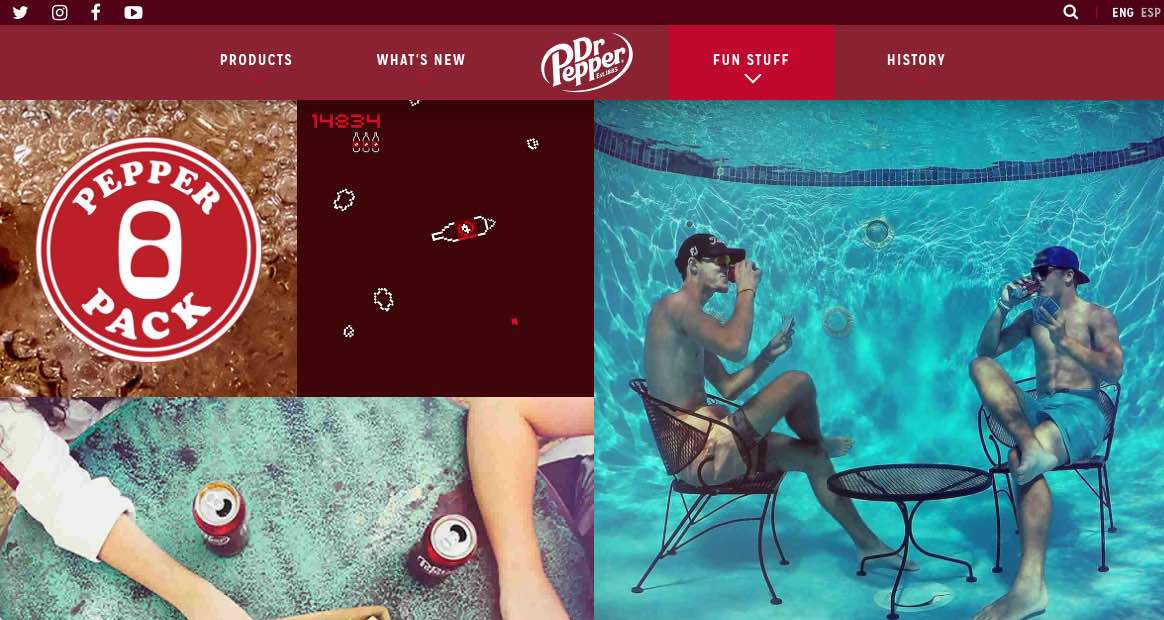What is the Potential of Social Media Marketing?
Are you wondering whether your social media marketing has any real impact on consumer purchasing decisions? Do you sometimes question the actual impact of social media marketing on buying decisions?
Most businesses and organizations dive into social media hoping to increase brand awareness and acquire more customers. Many are disappointed when it just doesn’t pan out for them.
In this article I’ll share five ways you can adjust your social media tactics to improve your brand’s influence on consumer purchasing decisions.
You Need to Change Social Conversations
A recently published Gallup poll indicates that despite lots of Americans using social media platforms, only 5% say those platforms have a great deal of influence on their purchasing decisions. Even worse, 62% say social media has no influence at all!
What’s the problem? Businesses think they can use social media to influence or change how consumers make their decisions. What is the hardest social media lesson for businesses to learn? It’s learning that you have to use your social media channels the way consumers use them. You can’t use social media the way your business uses other marketing mediums.
Consumers use social media to have conversation and build connections. Research shows that consumers primarily use social media to connect with family and friends. They also use social platforms to follow trends and find product reviews or information. They also will comment on what’s hot or new and write reviews about products that they like.
Since the 2008 recession, consumers are more skeptical of businesses and much more cautious with their spending. Because of these changes in consumer behavior, it’s highly unlikely that businesses influence consumers’ purchasing behavior simply by talking about themselves and their products on Facebook.
If you want to motivate and convert your social media audience to become customers you have to initiate conversations that engage them. You have to find a way to inspire them to advocate on your behalf to advocate on your behalf.
If social media users perceive your messages and intentions as sincere, they will engage with you. But if they suspect you’re trying to market to them, they will hide your content or block you from their feeds.
The bottom line is that social media isn’t primarily about driving sales or influencing consumers’ purchasing decisions. If that’s what you bought into, you’re going to be disappointed. Social Media marketing is about making emotional connections through positive customer experiences, exceptional service and engaging conversations.
What’s the Best Way For You Appeal to Millennials?
The Gallup poll I mentioned previously section shows that Millennials aren’t easily influenced by social media. Only 7% of millennia’s say that social interaction has the most influence on purchasing decisions, while 48% say it has no influence at all.
Millennials are the demographic least swayed by social media marketing. To influence Millennials via social media, companies have to understand how they consume information. And then you need to identify how to deliver an appealing marketing message to them.
Millennials are hyper-connected and consume content on multiple platforms and devices, often at the same time. They’re enthusiastic about honest, authentic marketing, however they want to be in charge of the conversations. They’re not interested in opinions coming from outside their social group. But they are super-interested in what their friends think.
To win over Millennials your content must be mobile-friendly. Your messaging must also address their needs and preferences. Hitting them with generic messages makes them feel that you are wasting their time. If you’re don’t understand what they’re looking for, it’s best to simply ask them.
Build trust with Millennials by showing that your policies and practices don’t clash. If your company’s Twitter bio says you follow back everyone who follows you, you must be sure to do exactly that. If you have a problem with your product or service, apologize publicly on your social networks. Then full explain your solution to the issue.
You Need to Know How to Engage Customers Offline and Online
You have to understand that social media doesn’t function in a vacuum. If your desire is to influence consumers, you have to engage with them online and offline. Gallup polls consistently find that customer engagement depends largely on how well you align all of your customer contact points.
Dr. Pepper is very successful when it comes to engaging with consumers both online and offline. For example, in the USA, Dr. Pepper encourages customers to share photos showing creative ways that they enjoy Dr. Pepper products.

Dr. Pepper’s engagement tactics are turning customers into brand advocates through online offerings that translate offline. While some industries have a definite advantage when it comes to leveraging their offline and online customer engagement.
The key is to understand your brand’s emotional connection with consumers, and act upon that connection. If you don’t know what the emotional connection is, the best thing to do is ask your audience.
You Need to Start Authentic Facebook Conversations
For consumers, social media is highly personal. They use it to interact with other people, not with brands. If you want to connect with consumers, they will more likely respond to companies that are personable and genuine. Here’s an example of how ADT uses Facebook to talk with consumers not at them:
They’re not trying to sell their security system, instead ADT offers safety tips about their homes, dating and travel to their Facebook users. Their focus is highly personal issues that hit close to home for American homeowners. Instead of pushing their product, ADT offers helpful information.
The lesson for businesses is to back off from hard-sell techniques and focus on opening a dialogue with consumers.
You Have to be Available at All Times
Since social media is always on with 24/7 engagement opportunities, consumers have come to expect immediate responses from brands. They expect to hear from you even on nights and weekends!
Research by a popular blogger shows that 42% of consumers who complain on social media expect a response within 60 minutes. Additionally, 57% expect the same response time at night and on weekends. They don’t care if it’s not during your normal business hours.
Are you ready to deal with those expectations? It’s important that you address customer concerns quickly. You can use social media to scale your customer service to meet expectations.
A great option is to launch an online community to enable customers to help each other. Within your community, you’ll probably find members who are more engaged and helpful than others. People who consistently go out of their way to help others solve their problems. You could create an advocacy program to reward those people for helping others. You can also help your customers help themselves by offering FAQ’s and how-to articles on your blog or website.
The most important step is to make the information easy to find. Include links on your social profiles and other marketing materials. If customers can solve a problem themselves, it reduces the need to pick up the phone or tweet a reply. Finally, you’re probably already monitoring social mentions. Continue to do that because your customers are a key source of information when your product isn’t working. Listen for negative feedback and reply accordingly.
Consumers Tune Out Brand-related Social Media Content
If you’ve used social media marketing, you’ve realized that consumers are good at tuning out brand-related content on Facebook and Twitter. You know that social media by itself could never motivate a fan or follower to recommend your brand to others.
That doesn’t mean you can’t change the conversation. You have to concentrate on what social media audiences want instead of what you want. You’ll succeed by catering to your customers’ expectations and habits.
What do you think? Have you used any of these tactics to influence consumers through social media? What was your experience? Please share in the comment box below.





